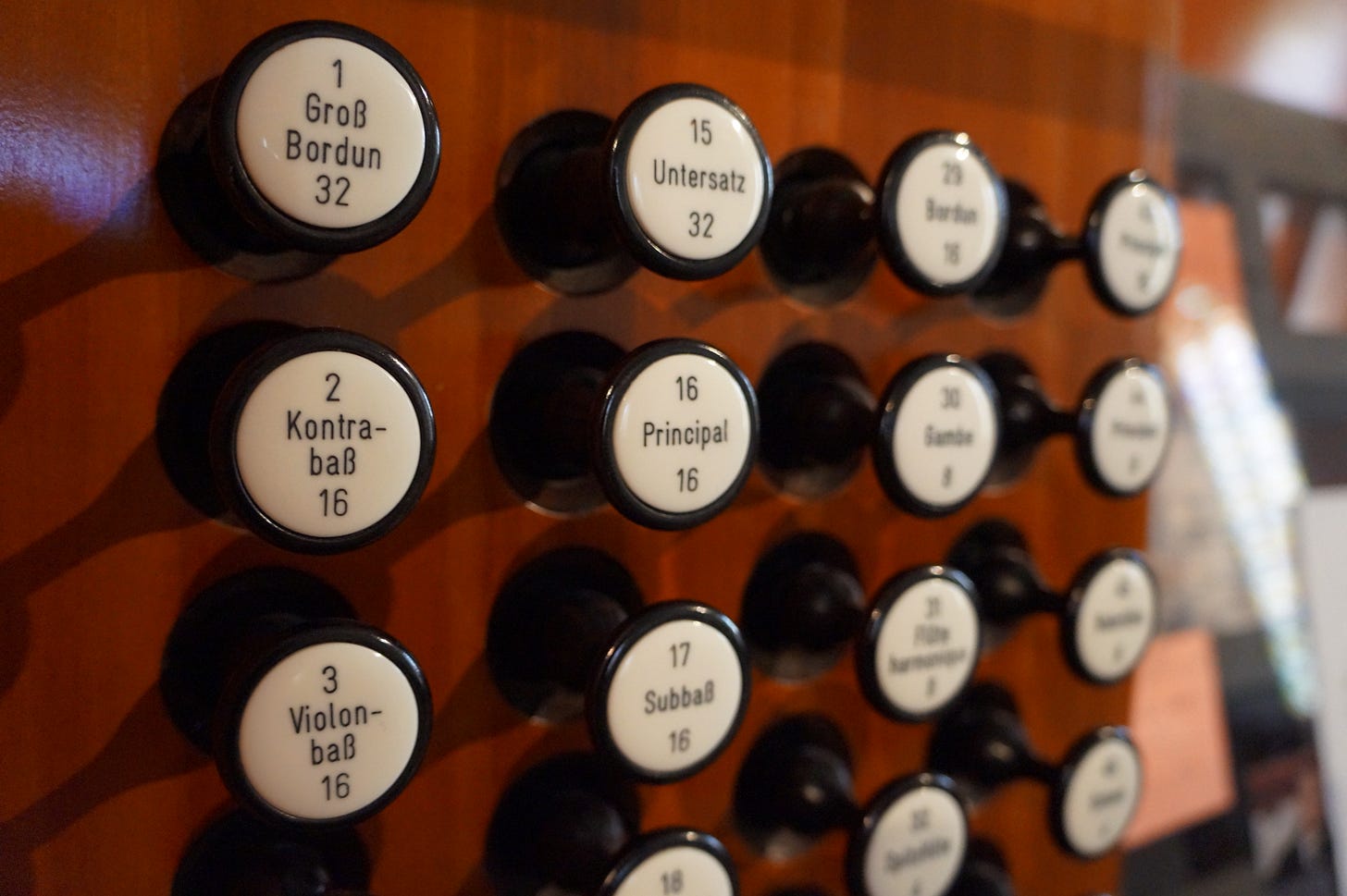What does “Pull out all the stops” actually mean?
Important Pipe Organ Terminology
Pulling out all the stops
In modern usage, this phrase means to reserve or hold back nothing. This is actually a reference to pipe organ terminology. Pulling out all the stops on a pipe organ would allow it to be as loud as possible.
What is a stop?
A stop is a control mechanism which blocks (or stops) air from traveling through a set of pipes on a pipe organ. Pulling a stop allows air to flow to certain pipes when a keyboard note is depressed. Stops are typically engraved with numbers and names corresponding to different pipe ranks.
Each stop corresponds to a set of pipes (called a rank) that associate with a particular instrument sound. Organists can engage various stops in combination to create certain new sounds. The largest organs have the most possible permutations of stop combinations.
This video is an excellent demonstration of how different organ stops can sound:
The organist plays several musical examples using different stop combinations. The video is just over 35 minutes but well worth your time.
What do the names on each stop refer to?
The names on each stop refer to the name of the instrument associated with the stop. Most stops on the organ belong to one of four families:
Flutes – Flute stops sound warm and imitate members of the flute instrument family.
Strings – Pipes in this family produce a string-like sound. Pipes in this family can be combined to create an orchestral sound.
Principals – Principal pipes are unique to the organ and do not directly imitate other instruments. They are harmonically balanced and are characteristic to how an organ sounds.
Reeds – This stop family uses a pipe with a vibrating component to produce sound. Stops in this family cut through other sounds of the organ by being louder or pointier than other stops.
Why are there numbers on each stop?
The number on a stop refers to the length (in feet) of the longest open pipe of a particular rank. Stops marked with a higher number use longer length pipes and speak at lower pitches.
For example, 8′ stops use pipes with the longest open pipe measuring eight feet. These stops speak at the same pitch as many other instruments (such as a piano or flute).
In contrast, 4′ stops use pipes that are half as long, and sound much higher than 8′ stops.
From Piano to Pipe Organ
Although I originally obtained my degree in piano performance, I was hired as an organist and learned on the job. One of my passions is sharing my love for the pipe organ with other musicians, especially pianists.
There is so much utility, practicality, and satisfaction to be found when playing the pipe organ, especially when one finds themselves in a good sacred music program!


